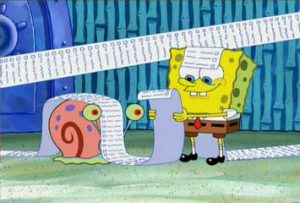In class, one of the first things we learned was pedagogy and the banking model. Paolo Fiere was an advocate of pedagogy and created the Bank Model of Education. Pedagogy is the practice of teaching in a theoretical way instead of a practical way. It also focuses on the effects that it can have on students. Out of this, Friere created the Banking Model of Education that critiques the traditional way most teacher. Just like pedagogy, the banking model also pays attention at how the traditional way can effect students. In this case, it effects students negatively. The traditional way treats students as if they are something robotic, just filling them with information without any context. Teaching should mold kids into being critical thinkers and be divergent thinkers. We shouldn‘t just process things the way they are told to us. We should be taught to question everything. I personally was really intrigued with this topic. I loved reading and learning about. Teaching is something I take very seriously because it is something I am planning to major in. I believe that teachers have a duty and this huge responsibility in their hands because they are the ones that are teaching the future. It isn’t a job to be taken lightly and creating robots out of students is such a waste because teachers have the ability to create students who are independent and critical thinkers. Enforcing habits like questioning everything, in class discussions, and including them in lessons can shape them into these amazing adults who succeed in the adult world. It was very admirable learning about pedagogy and the Banking Model because it shows that I am not the only one who thinks that there is something seriously wrong in the education system, and the students are not the one to blame.
Formal Analysis is a visual description of art. In class we had an in-depth class discussion about formally analyzing a piece of art. We said that analyzing art can provoke us to ask question and when we analyze artwork we usually look for the meaning of the piece, we evaluate it, and look at the central focus, Afterwards, we looked at a video of how to correctly analyze art, When looking at something like a painting, we describe it, look at the formal properties, at the subject matter and the historical context. Formal properties include, scale, medium, composition, illusion of depth, chiaroscuro, foreshortening, line color and material. Something that I really took away from learning about formal analysis was when we were shown the video of Goya 1808 being formally analyzed. I think this video was memorable because I was impressed with how much content was taken out of a single painting. I have always loved art and have always loved admiring it. However, for me admiring art would just be a five minute look at the work, reading the description and moving on to the next artwork. Watching that video made me realize that is an in-depth way of looking at art and by doing so, you can benefit so much more. The two voices that were speaking, would point out things that I would have never even noticed or even thought of when looking at the painting. It was insightful because it taught me how to appreciate art in a profound way.
Learning about the art in the ancient world was not my favorite but it was still interesting. The only reason why it wasn’t my favorite was because my love has always been in paintings, particularly in the renaissance period and seeing so much stonework was definitely new for me. Nonetheless, I still found it interesting because history has always been one of my favorite subjects and this topic definitely felt like a history lesson because it showed how advanced people were even in ancient times. Something else that I did on my own was compared and contrasted the art in the ancient world and the art that I love so much. Ancient world art was very into making the presence of the one who is charge known. We see these messages come out in artworks like “Stele of Naramsi” and “The Palette of Narmar” where the figure who is most significant is larger than the rest in the art. The differences can also be seen in what they wear on their heads and their posture. Another thing that I learned was that artwork of the ancient world was in tune with naturalism. Naturalism being the depiction of realistic things in their natural setting, which I thought to be very beautiful. The artworks that showed that were “Panel with Striding Lion,” “Dying Lioness,” “Deer Hunt, Catal Huyuk,” and “Lamassu.” “Lamassu” was definitely a terrifying figure for me, but knowing that people worshipped a figure like this was very intriguing. Something else that struck me where the buildings and homes that these people created. Artwork like “Pyramid of Khafre,” “Pyramid of khufu,” “Temple of Amun-re,” “Ziggurat of Ur,”and “Ishtar gate” just shows that these people had everything that they needed. Their knowledge exceeded what people expected it to be during the paleolithic and neolithic age. The two pieces of art that are most intriguing to me were the “Ziggurat of Ur” and the “Ishtar Gate.” “The Ziggurat of Ur” stuck out because it was a place where jobs, religious rituals, and administrative buisness were held. Seeing a building like that built and seeing the use of it, reminds me once again just how advanced they were. “Ishtar Gate, for me, was such an architectural beauty that blew me away because I never would have imagined a house to look so decorative and colorful at an ancient time like that. To also find out that a figure like the Lamasu and lions would be put outside houses like that for protection was also really cool.










